- Home›
- Healthy Living›
- International Yoga Day 2023: 7 Yoga Asanas To Manage Sleep Disorders
International Yoga Day 2023: 7 Yoga Asanas To Manage Sleep Disorders
By: Priyanka Maheshwari Sun, 18 June 2023 11:25:16
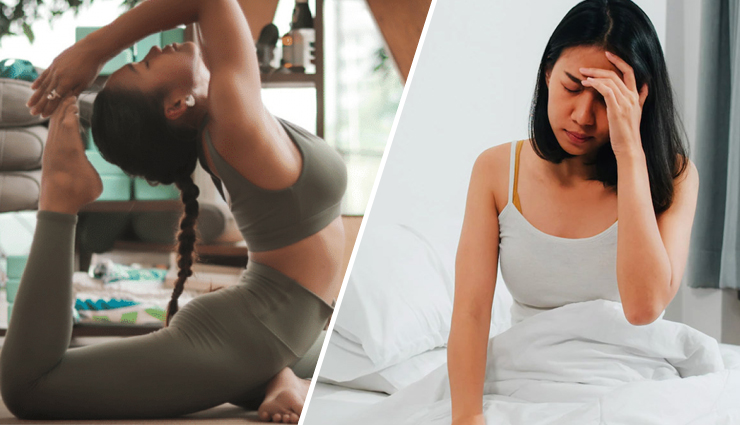
International Yoga Day is celebrated on June 21st every year to promote the physical, mental, and spiritual benefits of practicing yoga. Yoga has been recognized as a powerful tool for improving overall well-being, including sleep health. Sleep disorders can have a significant impact on our daily lives, affecting our energy levels, mood, and productivity. Fortunately, incorporating specific yoga asanas into your routine can help manage sleep disorders effectively. In this article, we will explore some yoga asanas that can promote relaxation, reduce stress, and improve sleep quality. Consistent practice of these asanas can help you experience improved sleep quality, reduced stress, and overall well-being. Embrace the power of yoga and its ability to restore balance to your sleep patterns, enabling you to wake up refreshed and rejuvenated each day.
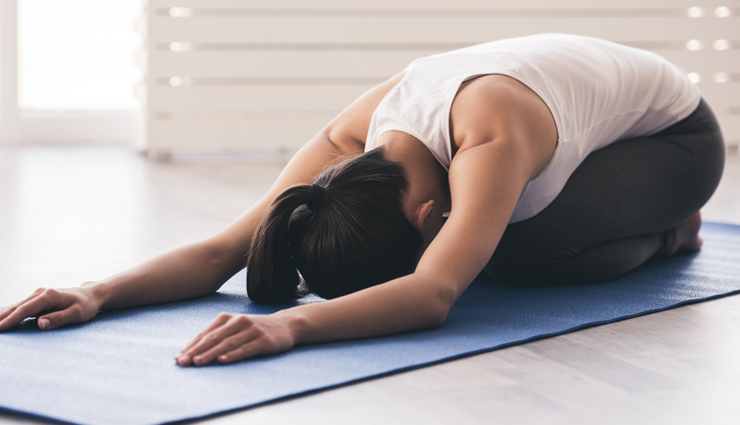
# Balasana (Child's Pose)
Balasana is a calming pose that helps release tension in the body and relax the mind. It gently stretches the back, hips, and thighs, promoting deep relaxation and relieving anxiety or stress that may interfere with sleep.
Steps to Practice Balasana (Child's Pose):
- Start by kneeling on the floor with your knees hip-width apart.
- Sit back on your heels and slowly lower your upper body forward, allowing your forehead to rest on the mat or a bolster.
- Extend your arms forward or alongside your body, palms facing up.
- Relax your shoulders, allowing them to soften away from your ears.
- Gently press your chest towards the thighs and lengthen your spine.
- Stay in this pose for several deep breaths or as long as it feels comfortable.
- To release the pose, gently walk your hands back towards your body and slowly roll up to a seated position.
Precautions:
- If you have knee or ankle injuries, it is advisable to use a blanket or bolster under your knees for added support.
- If you have high blood pressure or any recent injury to the hips or knees, consult with a yoga instructor or healthcare professional before attempting this pose.
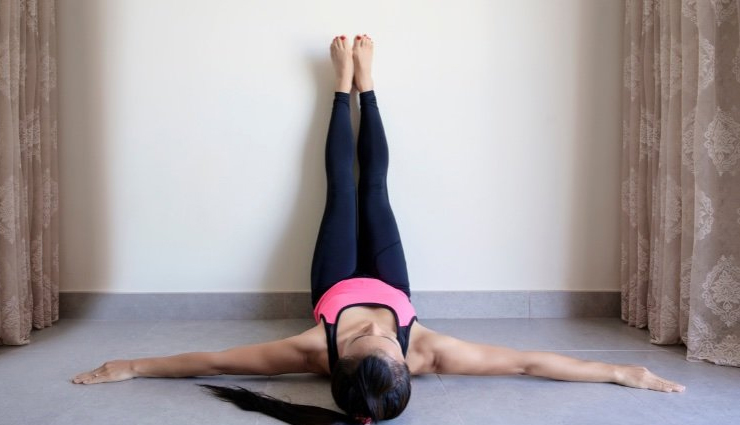
# Viparita Karani (Legs-Up-The-Wall Pose)
Viparita Karani is a restorative pose that involves lying on your back with your legs elevated against a wall. This pose improves blood circulation, calms the nervous system, and promotes relaxation. It can be particularly beneficial for individuals experiencing insomnia or restless leg syndrome.
Steps to Practice Viparita Karani (Legs-Up-The-Wall Pose):
- Find a clear wall space and sit with one hip against the wall, keeping your legs extended in front of you.
- Gently lie down onto your back and swing your legs up the wall, bringing your sitting bones as close to the wall as possible.
- Relax your arms by your sides, palms facing up, and allow your shoulders to soften into the mat.
- Rest your head and neck in a comfortable position, either with a small pillow or blanket for support.
- Close your eyes and focus on your breath, allowing your body to fully relax into the pose.
- Stay in this pose for 5 to 15 minutes, or as long as it feels comfortable.
- To release the pose, bend your knees and roll onto one side, then gently come up to a seated position.
Precautions:
- If you have any neck or back injuries, it is advisable to use a folded blanket or bolster under your hips for added support.
- Pregnant individuals should consult with a yoga instructor or healthcare professional before practicing this pose.
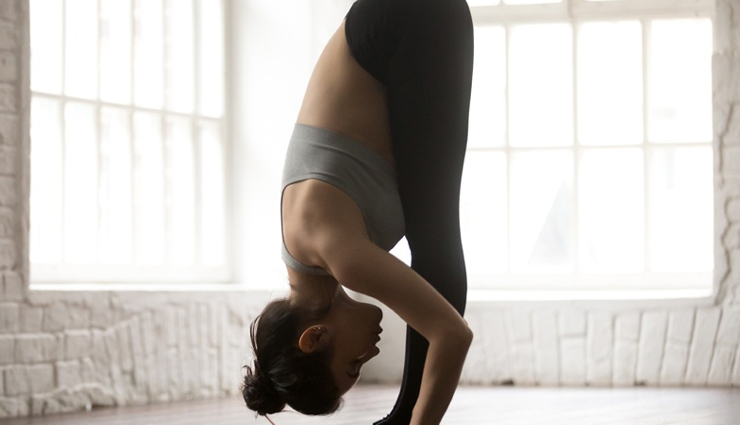
# Uttanasana (Standing Forward Bend)
Uttanasana helps release tension from the back, neck, and shoulders. It also promotes blood circulation to the brain, helping to calm the mind and relieve stress. Practicing this asana before bed can prepare your body for a restful night's sleep.
Steps to Practice Uttanasana (Standing Forward Bend):
- Begin by standing tall with your feet hip-width apart and your arms resting at your sides.
- Inhale deeply, lengthen your spine, and engage your core.
- Exhale and slowly fold forward from the hips, maintaining a straight back as long as possible.
- Bend your knees slightly if needed to bring your hands to the floor or grab onto your ankles or shins.
- Relax your head, neck, and shoulders, allowing them to hang naturally.
- Hold the pose for several deep breaths, feeling the stretch along the back of your legs and spine.
- To release the pose, engage your core and slowly roll up to a standing position, vertebra by vertebra.
Precautions:
- Individuals with back injuries, herniated discs, or high blood pressure should practice Uttanasana with caution or avoid it altogether.
- If you have tight hamstrings, bend your knees slightly or place your hands on blocks or a chair for support.
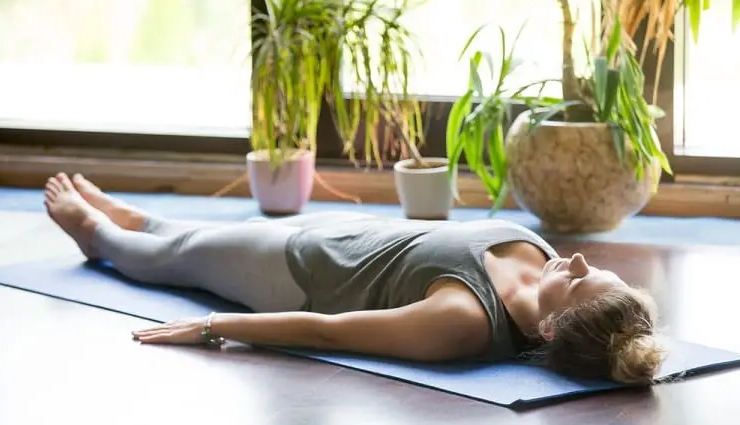
# Savasana (Corpse Pose)
Savasana is the ultimate relaxation pose, typically performed at the end of a yoga session. It involves lying flat on your back, allowing your body to completely relax. Savasana calms the nervous system, reduces anxiety, and helps quiet the mind, making it an excellent practice for improving sleep quality.
Steps to Practice Savasana (Corpse Pose):
- Lie down on your back on a comfortable yoga mat or blanket.
- Make sure your body is fully supported and aligned, with your legs comfortably apart and your arms relaxed by your sides, palms facing up.
- Close your eyes and allow your body to sink into the ground, releasing any tension or stress.
- Take a few deep breaths, allowing your breath to be slow, deep, and natural.
- Begin to consciously relax each part of your body, starting from your toes and working your way up to your head.
- Let go of any thoughts or distractions, and simply focus on your breath and the sensation of relaxation.
- Stay in Savasana for at least 5-10 minutes, or longer if desired.
- To exit the pose, gently deepen your breath, wiggle your fingers and toes, and slowly bring awareness back to your body.
- Roll onto your side, take a few moments to transition, and slowly come up to a seated position.
Precautions:
- If you have any specific medical conditions or injuries, it's advisable to consult with a yoga instructor or healthcare professional before practicing Savasana.
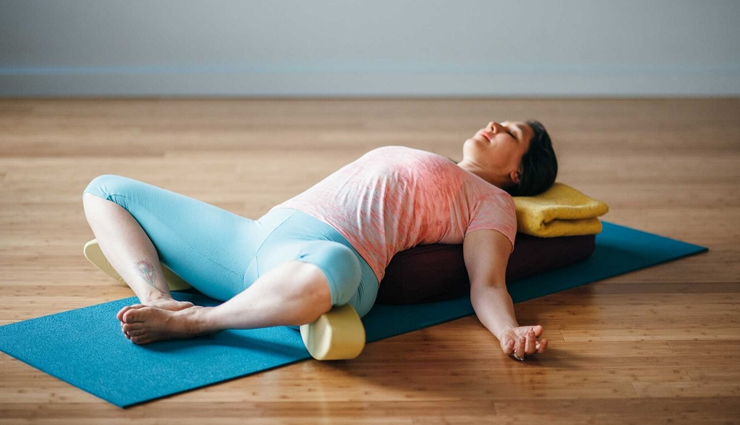
Supta Baddha Konasana (Reclining Bound Angle Pose):
Supta Baddha Konasana opens the hips and stretches the inner thighs. This pose promotes deep relaxation, relieves fatigue, and reduces anxiety. It can be particularly beneficial for individuals struggling with insomnia or stress-related sleep disorders.
Steps to Practice Supta Baddha Konasana (Reclining Bound Angle Pose):
- Begin by sitting on your mat with your legs extended in front of you.
- Bend your knees and bring the soles of your feet together, allowing your knees to open out to the sides.
- Slowly lower your back onto the mat, supporting yourself with your elbows and forearms if needed.
- Adjust the position of your feet so that they are comfortable and the knees are relaxed.
- Gently release your arms by your sides, palms facing up, or place your hands on your abdomen or thighs.
- Close your eyes and focus on your breath, allowing your body to relax and soften with each exhale.
- Stay in this pose for 5 to 10 minutes, or as long as it feels comfortable.
- To release the pose, slowly bring your knees together and hug them into your chest, gently rolling to one side.
- Take a few moments to rest in a fetal position before slowly coming up to a seated position.
Precautions:
- If you have any knee or hip injuries or discomfort, use props such as blankets or blocks under your knees or thighs to support them.
- Pregnant individuals should consult with a yoga instructor or healthcare professional before practicing this pose.
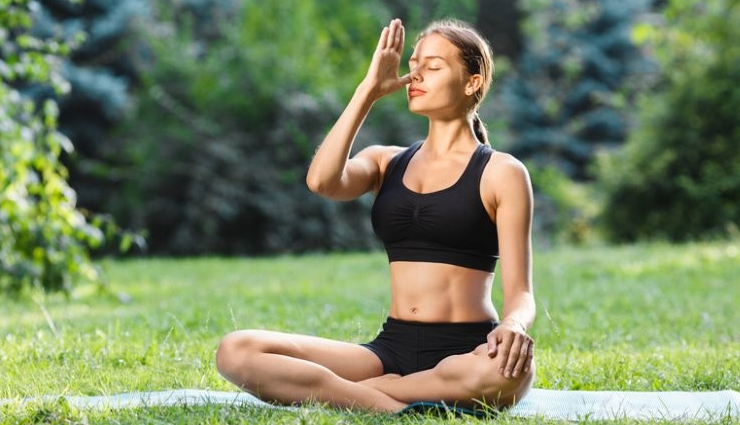
# Anulom Vilom Pranayama (Alternate Nostril Breathing)
Anulom Vilom Pranayama is a breathing technique that involves alternating the breath between the left and right nostrils. This practice helps balance the nervous system, reduce stress, and calm the mind. Regular practice of this pranayama before bedtime can promote relaxation and induce better sleep.
Steps to Practice Anulom Vilom Pranayama (Alternate Nostril Breathing):
- Find a comfortable seated position, either on a mat or a chair, with your spine erect and shoulders relaxed.
- Rest your left hand on your left knee, with the palm facing upward, and bring your right hand closer to your face.
- Use your right thumb to gently close your right nostril, and inhale slowly and deeply through your left nostril.
- After a full inhalation, release your right nostril, and use your right ring finger or pinky finger to close your left nostril.
- Exhale slowly and completely through your right nostril.
- Inhale through your right nostril, keeping your left nostril closed.
- After a full inhalation, release your left nostril, and use your right thumb to close your right nostril.
- Exhale slowly and completely through your left nostril.
- Repeat steps 3 to 8 for several rounds, alternating the nostrils with each breath.
- Aim for a smooth, steady, and controlled breath throughout the practice.
- Gradually increase the duration of inhalation, exhalation, and retention (holding the breath) as you become more comfortable with the practice.
- End the practice with an exhalation through your left nostril.
Precautions:
- If you have any respiratory conditions, such as asthma or chronic obstructive pulmonary disease (COPD), practice Anulom Vilom Pranayama under the guidance of a qualified yoga instructor.
- If you feel dizzy or lightheaded during the practice, pause and return to normal breathing.
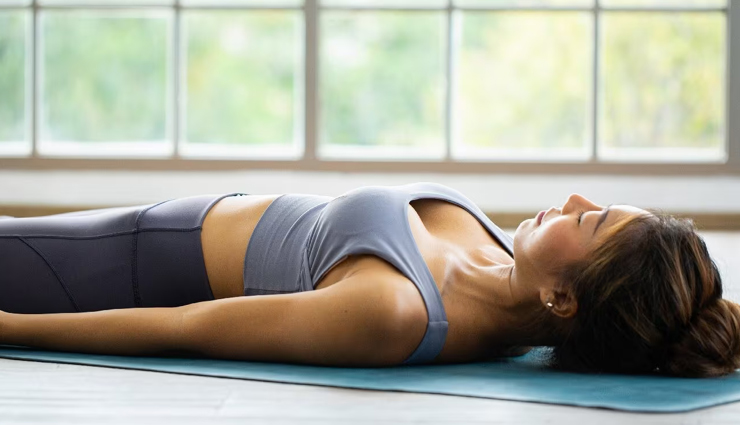
# Yoga Nidra (Yogic Sleep)
Yoga Nidra is a guided meditation technique that induces a deep state of relaxation and awareness. It helps release physical, mental, and emotional tension, allowing the body and mind to enter a state of profound rest. Yoga Nidra is known to be highly effective in managing insomnia and promoting restorative sleep.
Steps to Practice Yoga Nidra (Yogic Sleep):
- Find a comfortable and quiet space where you can lie down flat on your back, preferably on a yoga mat or a comfortable surface.
- Close your eyes and take a few deep breaths to relax your body and mind.
- Set an intention for your practice, such as relaxation, healing, or self-discovery.
- Follow the instructions of a guided Yoga Nidra meditation or recording, which typically involves a systematic relaxation of different parts of the body.
- Remain still and relaxed throughout the practice, maintaining awareness of the instructions and sensations in your body.
- Allow your mind to follow the guidance, surrendering to the present moment and letting go of any thoughts or judgments.
- Stay in the state of deep relaxation for the duration of the practice, which can range from 20 minutes to an hour.
- After completing the practice, slowly bring your awareness back to your surroundings and your physical body.
- Take a few moments to stretch and transition back into a seated position.
Precautions:
- While Yoga Nidra is generally safe for most people, individuals with severe psychological conditions or certain medical conditions should consult with a healthcare professional before practicing.
- It's essential to practice Yoga Nidra with a certified yoga instructor or use guided recordings from trusted sources.





